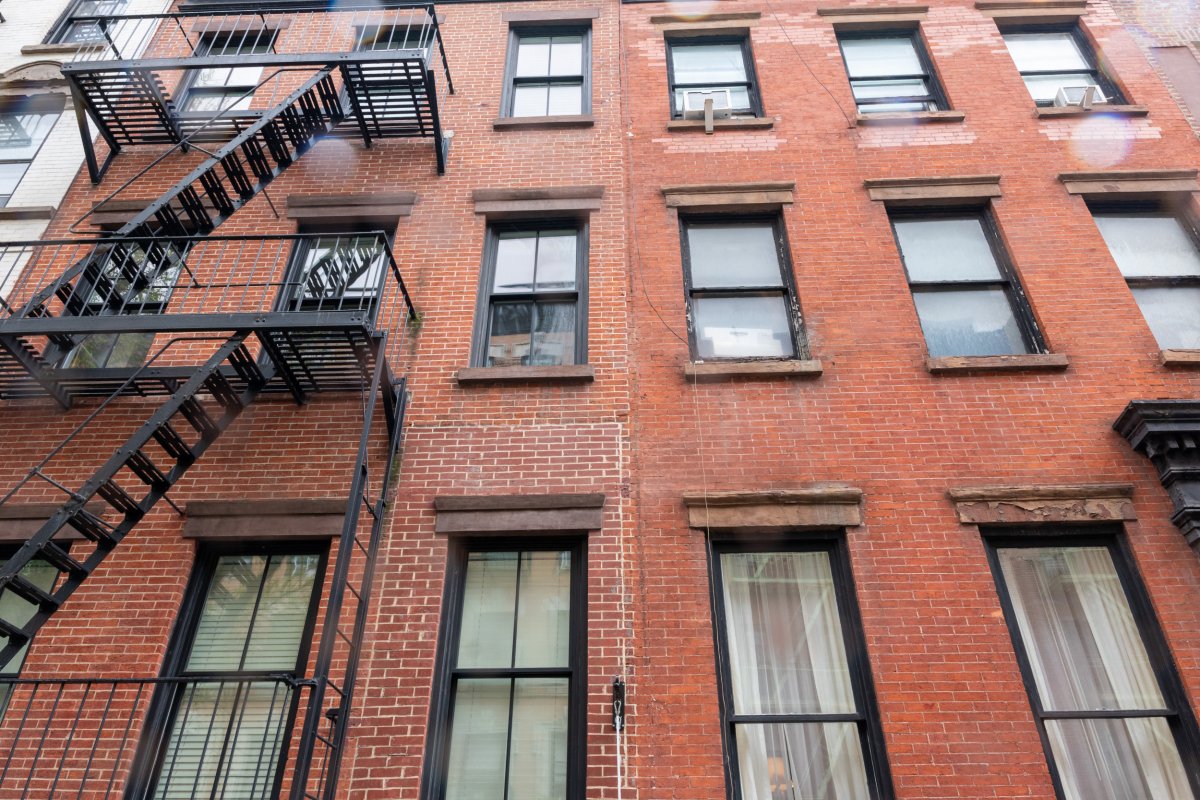While inflation may be slowing, many Americans are still facing higher rent and housing costs. Newsweek talked to experts about what’s causing it and who is most affected.
Across America, the average rent for a one-bedroom apartment is $1,558, according to Apartments.com. But that number can hit $4,000 or more in some of the top real estate markets.
A new report from Eden Emerald Hot Water discovered New York continues to see some of the harshest effects of rising rent, with rent soaring by 77 percent and hidden household costs also climbing by 24 percent since 2020.
“You might expect that rent control in some apartment buildings would prevent significant price increases in New York City,” Kevin Thompson, a finance expert and the founder and CEO of 9i Capital Group, told Newsweek. “However, the reality is that prices for non-rent-controlled apartments are rising sharply, likely due to market distortions caused by rent control.”
That was essentially a rent increase of $1,019 for residents, but many other states are dealing with skyrocketing housing prices as well.
The study found these were the top five states with the highest rising living costs for both renters and homeowners: New York, Massachusetts, Maine, Arizona and Washington.
The report was based on the percentage increase in fair market gross rent in each state between 2020 and 2024, per iPropertyManagement data.
Meanwhile, hidden costs, like property taxes, homeowners’ insurance and energy costs were calculated based on estimates for single-family homes by Bankrate.
After New York, Massachusetts saw some substantial increases in rent and household costs. Between 2020 and 2024, those costs soared by $17,413, and rent climbed by $1,360 on average to $2,332.
And in Maine, median rent prices surged by $502, roughly 57 percent, to $1,372.
Many people in the Northeast work for the government and in tech, driving prices up significantly, said real estate broker Pila Jessie of KHORR Realty.
“Employees in these industries enjoy job security as well as increasingly higher salaries which lends directly to the increase in housing costs,” Jessie told Newsweek.
Outside of the Northeast, Arizona saw rising hidden household costs, making the price go from $12,385 to $16,373 annually, while the median rent climbed by $599 to $1,101.
Those living in the Pacific Northwest were also no strangers to rent hikes, as they saw rent increase from $1,395 to $2,079 on average.
The states least impacted by rising rent and household prices included Alaska, North Dakota, Kansas and Iowa, where the housing markets generally remain less attractive.
“These findings display a clear disparity between states as the nation tackles the rising cost of living,” Nick Wallace, CEO of Eden Emerald Hot Water, said in a statement.
“While New York and Massachusetts are seeing significant percentage increases in rent and hidden household expenses, Alaska and North Dakota are experiencing more moderate impacts, placing less of a burden on these residents in 2024.”
Nationwide title and escrow expert Alan Chang said housing costs are still unaffordable in much of the country due to limited inventory from the low number of housing units built in recent years.
“Building more housing units will be the best approach to reduce the increasing pain of housing affordability, but this takes time,” Chang told Newsweek. “Streamlining permitting and stabilizing materials cost will help lead to better affordability in the long run.”
The corporate landlord takeover is also at the root of many of the price surges, said Michael Ryan, a finance expert and the founder of michaelryanmoney.com.
“The biggest problem is we used to know our landlords,” Ryan told Newsweek. “Now they’re multi-billion dollar mega-corporations. With profits as their only motive, these institutional investors own roughly 3.2 million units nationwide.”
Due to the price changes, many Americans could end up migrating into new areas and shifting population patterns in the process.
“I believe we’re in uncharted territory,” Ryan said. “This isn’t just about housing. It’s reshaping how Americans think about where and how they live. The migration patterns we’re seeing today will likely influence regional economies for decades to come.”
However, for those Americans who were forced to return to their offices in the Northeast, the higher rents might not be something they can run from.
“In the Northeastern United States, many employees who were allowed by their employer to work remotely are now having to come back to those offices, and subsequently seeing a return in housing costs in the area,” Alex Beene, a financial literacy instructor for the University of Tennessee at Martin, told Newsweek.
“Some landlords are taking advantage of that return, as well. We’re seeing similar trends in places like California and neighboring Arizona. The glue that holds most of these states together on this top 10 list is the average incomes are higher than the national average and that usually equates to steeper housing costs.”

Spencer Platt/Getty Images

